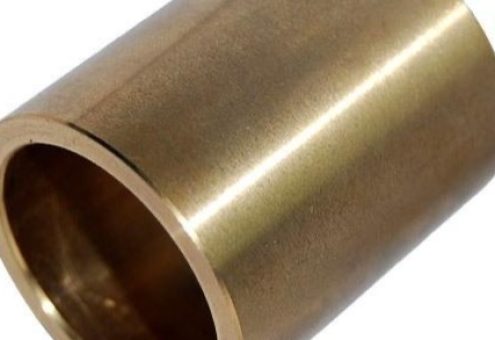Washers
Home » Washers
What is Washers?
A washer may be a disk formed plate (made of metal, rubber, or plastic) used to garrison the joints from ill-use through adjustment method and to disseminate the load equally below the bolt and nut (i.e., rib fasteners).
Generally, it operates as a spacer or seal. On the opposite hand, Bolt joins two surfaces.
It possesses threads and a planate head.
What Are Washers Used for?es Used For?
To reduce pressure or strain exerted on pipelines without reducing fluid flow rate – Connecting large diameter piping systems together in power plants, refineries, chemical plants – To connect and disconnect piping systems
Facilitating repairs in pipelines by making it easier to access them (e.g., when an emergency shutdown is required) or relocating a pipeline
Materials for Washers
Different Types of Washers
Washers are mainly of 3 types:
Types of Plain Washers
Torque Washer
These include a square shaped hole that prevents the bolt from spinning and therefore helps in the adjustment of it. They are usually utilized in carpentry.
Flat Washer
These are slender, flat, circular washer with a hole at the centre (ring-shaped). Except dividing the load equally, it conjointly provides support to little head screws. A flat washer is what the general public thinks about a standard washer. They are sensible for general use.
Fender Washer
These have a larger outer diameter (i.e., the opening at the centre is small). Except for dividing the load equally, they are conjointly used for automobile, plumbing, electrical functions, sign board flex, and banner fixing functions. It is sometimes a skinny metal. They are named for their general use of automobile fenders.
Finishing or Countersunk Washer (90°/120°)
These are used for the planate head is countersunk screws that provide a flush surface.
Shoulder Washer
These have a shoulder sort form. They’re in the main used for insulating electrical wires and are found in nylon, fibre-glass, PCTFE, PTFE, etc.
C-washer
These are used to slide in and out of bolt or shaft. These appear as if a flat washer, however, it’s a slot cut from the middle hole to create a “C” form. The C-Washer used at any time may have to be adjusted or replaced while not removing the fastener.
Types of Spring Washers
Belleville or Conical Washer
These are helpful to produce strength throughout adverse thermal enlargement or contraction. They bear a little quantity of deflection, counting on height-thickness magnitude.
Dome Spring Washer
These have extreme load capability with very little deflection vary. They possess ground curves and have planate load-bearing surfaces. The dome spring washers are the same as a Belleville washer, however, with rounded sides.
Wave Spring Washer
These possess medium load capability, and deflection vary. They are usually used as cushion-springs and spacers. These kinds of washers rotate in 2 directions, forming a wave-like form.
Finger Spring Washer
These steel washers are used to handle noise, excess wear, vibrations as they decrease skidding wear. They possess a good balance between strength (well-distributed load points) and suppleness. The finger spring washers include three sickle-shaped flanges.
Crescent / Curved Spring Washer
These give support a little hundred by undergoing Brobdingnagian quantity of deflection. These have linear load-deflection options that compel them to be used for load athletics products. These washers appear as if flat washers that are somewhat sickle-shaped to grant lighter pressure and maintain flexibility.
Types of Locking Washers
Helical/split Lock Washer
These provide further pre-load on screws, therefore leading to a shock-absorption method. Split lock washers are non-continuous rings that tilt every finish slightly outside in opposite directions.
c
External Tooth Lock Washer
These are used to resist the loosening of wacky & bolts. They’re used in conjunction with head screws. Their teeth bite to a sexual union surface and forestall compression force. The external tooth lock ring provides the most torsional resistance. It’s used to lock deep-headed fasteners into place.
Internal Tooth Lock Washer
These perform a similar action because of the previous one. Their teeth conjointly absorb vibration. It’s used to lock shallow-headed fasteners into place.
Purpose of Washers
The principal aim of using washers are:-
Coatings
To disseminate the pressure of the nut or bolt equally over the part being secured, reducing the prospect of harm.
Grooves
To offer an even surface for the nut or bolt to be turned on, making it less likely to loosen as a result of an uneven fastening surface.
Indents
To offer vibration absorption.
Indents
To giveTo offer liquid safeguard (Often utilized to create a water-resistant seal).
Related Questions
Washer, machine component that is used in conjunction with a screw fastener such as a bolt and nut and that usually serves either to keep the screw from loosening or to distribute the load from the nut or bolt head over a larger area. For load distribution, thin flat rings of soft steel are usual.
- Split lock washers are helical-shaped split rings.
- Internal use lock washers have teeth made to bite into the nut/screw head and surface it contacts.
- Shaft Lock Nuts.
- Shaft Lock Washers.
- Curved Spring Washers.
- Finger Spring Washers.
Fender Washers have a larger outside diameter as compared to the inside diameter. Therefore fender washers distribute the load to a relatively larger area compared to flat washers.
Fender Washers have applications in automobile, plumbing, sheet metal and electrical applications, attaching sign boards, panels and drywall.
The primary purpose of most washers is to evenly distribute the load of the threaded fastener with which they are used.
Threaded fasteners stress the material in which they are driven. Driving a screw into wood, for example, may cause the wood to crack around the surface
A washer is a thin plate (typically disk-shaped, but sometimes square) with a hole (typically in the middle) that is normally used to distribute the load of a threaded fastener, such as a bolt or nut.



